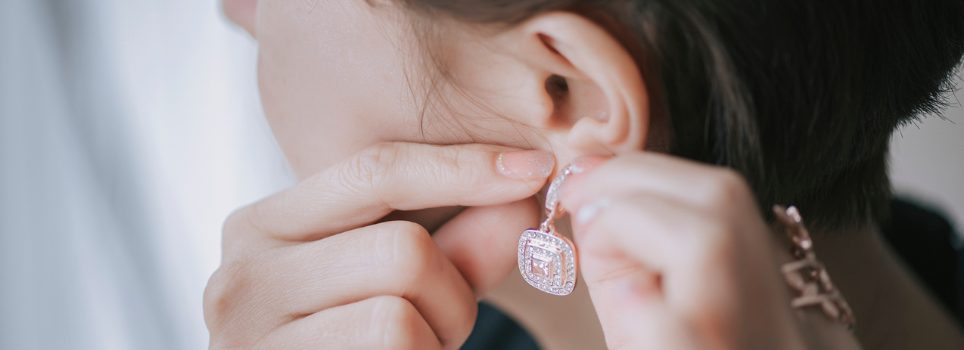Earlobes can become damaged for several reasons, such as:
- Prolonged use of earrings
- The effects of gravity
- Skin aging
Over time, earlobes can thin to the point of breaking, especially after wearing heavy jewelry. What should be done in such cases?
The Aging of the Earlobes Skin
The skin of the ears, like any other part of the body, undergoes aging over time.
The aging process affects the skin and subcutaneous tissues, leading to the thinning of the fatty tissue and dermis of the earlobes. As a result, they are no longer capable of supporting the weight of earrings.
Several situations can occur when the earlobe cannot withstand the weight of earrings. These include:
- Irreversible enlargement of the piercing hole
- Schisis, which is a complete splitting of the lobe
- Tearing of the soft tissue, particularly in cases of accidental trauma where the earrings are pulled
In such cases, the term “bifid lobes” describes the condition, which can be corrected by reconstructing the continuity of the subcutaneous tissue and skin of the earlobes.
Surgery to Correct the Earlobe
To correct the earlobe, a minor outpatient surgery is performed under local anesthesia to reconstruct the anatomy of the earlobe. Fine sutures are applied to the anterior and posterior parts of the lobe, which will be removed on an outpatient basis after 15 days. After 3 weeks, a new piercing hole can be made, allowing the patient to wear earrings again.
Earlobes: What Is Filler Used For?
When earlobes become dehydrated and show signs of aging, they may develop a hollowed-out appearance. In such cases, local treatments can be performed using hyaluronic acid filler infiltrations. These injections help restore:
- Volume
- Distension
- Hydration
Another option is lipofilling or autologous adipose tissue grafting. This procedure involves harvesting a small amount of fat from the abdomen or hips under local anesthesia. The regenerative and volumetric effects of the fat are utilized to restore tissue tropism, providing long-lasting and biocompatible results.
Can Piercings Damage the Ears?
Piercings can cause damage to the ears, especially if they exert excessive weight and traction on the tissue. This situation often occurs after accidental trauma, where the piercing gets stuck somewhere.
In particular, earlobe dilators can pose risks. If one regrets having them and the tissue damage is not extensive, it is possible to close the piercing hole by reconstructing the earlobe. Nevertheless, the results may not always be optimal.
-
3,400 Physicians
-
110,400 Annual surgeries
-
190,400 Annual Inpatient Admissions
-
928,000 Patients


